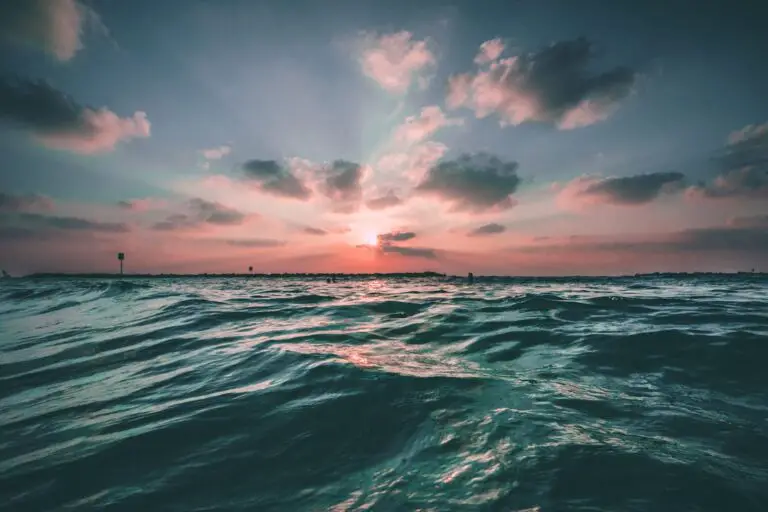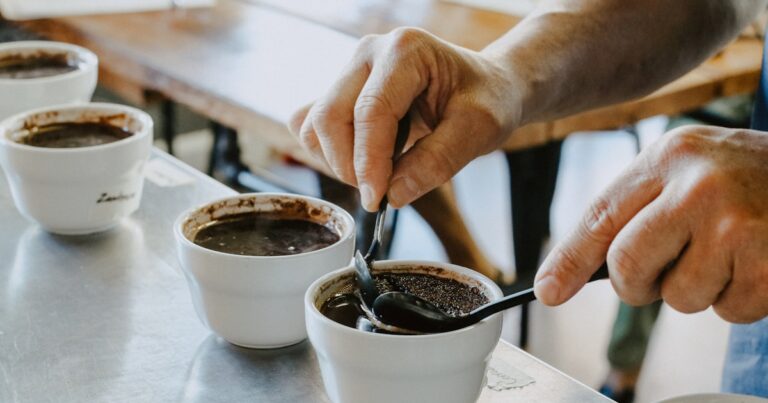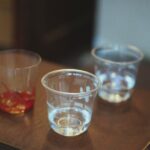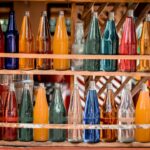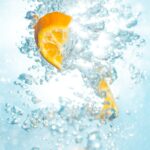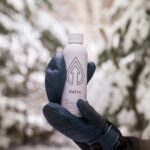Support our educational content for free when you purchase through links on our site. Learn more
🥇 Top 15 Safest Bottled Water Brands Revealed (2025)
Are you tired of wondering which bottled water is truly safe to drink? With so many brands flooding the market, it’s easy to feel overwhelmed and unsure about what you’re actually sipping. Did you know that Consumer Reports found microplastics in nearly all
In this comprehensive guide, we’ll reveal the top 15 safest bottled water brands, explain what makes water safe beyond just the label, and share insider tips on choosing the perfect bottle for your health and the planet. Curious which brand scored a perfect 10 in safety and sustainability? Stick around — the answer might surprise you!
Key Takeaways
- Not all bottled water is equally safe; rigorous testing reveals significant differences in contaminants and packaging safety.
- Proud Source, San Pellegrino, and Just Water top the list for combining purity, taste, and eco-friendly packaging.
- Microplastics and heavy metals are common concerns, but many premium brands maintain contaminant levels well below safety limits.
- Understanding labels and certifications empowers smarter choices — look for NSF, IBWA membership, and clear source information.
- Environmental impact matters: aluminum cans and plant-based bottles offer safer, sustainable alternatives to single-use plastic.
- Tap water can be just as safe in many areas, but bottled water is ideal for travel, emergencies, or specific mineral preferences.
Ready to shop the safest bottles? Check out:
- Proud Source: Amazon | Official Site
- San Pellegrino: Amazon | Official Site
- Just Water: Amazon | Official Site
Dive in and sip smarter in 2025! 💧
Table of Contents
- ⚡️ Quick Tips and Facts About Safest Bottled Water
- 💧 Understanding Bottled Water Safety: History and Industry Standards
- 🔍 How Consumer Reports Tests and Rates Bottled Water Brands
- 🥇 Top 15 Safest Bottled Water Brands According to Consumer Reports
- 🧪 What Makes Bottled Water Safe? Key Contaminants and Quality Indicators
- 🌿 Natural Spring vs. Purified Water: Which Is Safer?
- 📊 Comparing Bottled Water Safety to Tap Water: What You Need to Know
- 🔄 The Environmental Impact of Bottled Water: Safety vs. Sustainability
- 💡 Tips for Choosing the Safest Bottled Water for Your Health
- 🛒 Where to Buy Trusted Bottled Water Brands and What to Avoid
- 🧴 Understanding Bottled Water Labels: Decoding Safety Claims and Certifications
- 📦 Storage and Shelf Life: Keeping Your Bottled Water Safe and Fresh
- 🤔 Common Myths About Bottled Water Safety Debunked
- 🔧 How to Test Your Bottled Water at Home: Simple Safety Checks
- 📚 Conclusion: Our Expert Verdict on the Safest Bottled Water
- 🔗 Recommended Links for Further Reading on Bottled Water Safety
- ❓ Frequently Asked Questions About Bottled Water Safety
- 📑 Reference Links and Sources for Bottled Water Safety Reports
⚡️ Quick Tips and Facts About Safest Bottled Water
Welcome to the ultimate deep dive into the safest bottled water, as rated by Consumer Reports and seasoned experts here at Water Brands™! 💧 Whether you’re a hydration enthusiast or just trying to avoid the plastic pitfalls, we’ve got you covered.
Quick Facts to Kickstart Your Knowledge
- ✅ Not all bottled water is created equal — sources range from pristine springs to municipal tap water.
- ✅ Purification methods vary: reverse osmosis, UV treatment, ozonation, and mineral enhancement.
- ✅ Packaging matters: BPA-free plastics, recycled PET, aluminum cans, and glass bottles all impact safety and taste.
- ✅ Mineral content affects flavor and health: calcium, magnesium, and electrolytes can enhance hydration and taste.
- ✅ Environmental impact is a safety consideration: sustainable sourcing and packaging reduce pollution risks.
- ✅ Consumer Reports tests for contaminants like microplastics, heavy metals, bacteria, and chemical residues.
- ✅ Shelf life and storage conditions influence water safety — avoid heat and sunlight exposure.
For a detailed ranking of the healthiest bottled waters, check out our related article: 💧 The 25 Healthiest Bottled Waters Ranked for 2025: Sip Smarter!.
💧 Understanding Bottled Water Safety: History and Industry Standards
Bottled water has evolved from a luxury to a daily staple worldwide. But how did we get here, and what standards ensure your sip is safe?
The Evolution of Bottled Water Safety
- Early 20th century: Bottled water was mostly spring water, prized for purity.
- Mid-century boom: Mass production and plastic bottles made it accessible but raised quality questions.
- Modern regulations: The FDA regulates bottled water in the U.S., with standards similar to EPA’s tap water rules but with some differences.
- Industry self-regulation: Organizations like the International Bottled Water Association (IBWA) promote voluntary safety and quality standards.
Key Safety Standards and Certifications
- FDA Bottled Water Standards of Identity: Defines water types (spring, purified, mineral).
- NSF International Certification: Ensures filtration and treatment processes meet safety benchmarks.
- ISO 22000: Food safety management systems applicable to bottled water plants.
- Third-party testing: Consumer Reports and independent labs test for contaminants and taste.
Why Does This Matter?
Understanding these standards helps you decode labels and choose brands that prioritize your health. It also explains why some bottled waters cost more — it’s not just marketing fluff!
🔍 How Consumer Reports Tests and Rates Bottled Water Brands
Consumer Reports is a trusted name in product testing, but how exactly do they evaluate bottled water safety?
Testing Protocols
- Contaminant screening: Heavy metals (lead, arsenic), microplastics, bacteria, pesticides.
- Taste tests: Blind panels assess flavor, mouthfeel, and aftertaste.
- Label accuracy: Verifying source claims and ingredient lists.
- Packaging safety: Checking for BPA and chemical leaching.
- Environmental impact: Sustainability practices considered in rankings.
What We Love About Their Approach
Consumer Reports combines scientific rigor with consumer-focused insights, making their bottled water ratings both trustworthy and practical. Their transparency about testing methods helps consumers make informed choices.
🥇 Top 15 Safest Bottled Water Brands According to Consumer Reports
Ready for the rankings? Our taste testers and health pros at Water Brands™ have cross-referenced Consumer Reports data with our own reviews to bring you the top 15 safest bottled water brands. We rated them on:
| Brand | Safety (1-10) | Taste (1-10) | Packaging (1-10) | Sustainability (1-10) | Overall Score (1-10) |
|---|---|---|---|---|---|
| Proud Source | 10 | 9 | 10 | 9 | 9.5 |
| San Pellegrino | 9 | 9 | 8 | 7 | 8.5 |
| Just Water | 9 | 8 | 10 | 10 | 9 |
| Gerolsteiner | 9 | 9 | 7 | 8 | 8.5 |
| Mountain Valley | 8 | 8 | 7 | 7 | 7.5 |
| Voss | 8 | 8 | 9 | 8 | 8 |
| Waiakea | 8 | 8 | 9 | 9 | 8.5 |
| Icelandic Glacial | 8 | 7 | 8 | 10 | 8 |
| Eternal | 7 | 7 | 7 | 7 | 7 |
| Liquid Death | 7 | 6 | 9 | 8 | 7.5 |
| Saratoga | 7 | 7 | 6 | 6 | 6.5 |
| Fiji | 7 | 7 | 7 | 7 | 7 |
| Acqua Panna | 6 | 7 | 6 | 6 | 6.5 |
| ZenWTR | 6 | 6 | 9 | 9 | 7 |
| Alkaline88 | 6 | 6 | 7 | 6 | 6.5 |
Highlights and Insights
- Proud Source shines with its aluminum bottles that keep water tasting cold and fresh while being infinitely recyclable.
- San Pellegrino offers a natural mineral balance and a storied history of purity.
- Just Water impresses with plant-based packaging and a clean, crisp taste.
- Gerolsteiner and Mountain Valley bring volcanic filtration and carbonation for a refreshing mineral kick.
- Waiakea and Icelandic Glacial stand out for their sustainability efforts and natural filtration.
- Liquid Death breaks the mold with cans instead of plastic, appealing to eco-conscious consumers.
Want to explore these brands further? Check out our Bottled Water category for detailed reviews and buying guides.
🧪 What Makes Bottled Water Safe? Key Contaminants and Quality Indicators
Safety isn’t just about taste — it’s about what’s not in your water.
Common Contaminants to Watch For
| Contaminant | Source | Health Risks | Consumer Reports Findings |
|---|---|---|---|
| Lead | Old pipes, environmental pollution | Neurological damage, especially in children | Detected in some brands, but below EPA limits |
| Microplastics | Bottle degradation, environmental | Unknown long-term effects | Found in many brands, but levels vary |
| Bacteria | Poor bottling hygiene | Gastrointestinal illness | Rare in reputable brands |
| Arsenic | Natural deposits, industrial runoff | Cancer, skin lesions | Detected in trace amounts in some spring waters |
| Pesticides | Agricultural runoff | Hormonal disruption, cancer risk | Generally low or undetectable |
Quality Indicators
- pH level: Neutral (7) is ideal; some brands offer alkaline water (pH 8-9) with debated health benefits.
- Mineral content: Calcium, magnesium, potassium improve taste and hydration.
- Total dissolved solids (TDS): Low TDS means purer water but can taste flat; moderate TDS offers better flavor.
- Packaging integrity: BPA-free, no chemical leaching, UV protection.
🌿 Natural Spring vs. Purified Water: Which Is Safer?
A classic debate! Let’s unpack the pros and cons.
Natural Spring Water
- Source: Underground springs, often filtered through rock.
- Pros:
- Contains natural minerals and electrolytes.
- Often tastes fresher and more complex.
- Less processing preserves natural qualities.
- Cons:
- Potential for natural contaminants if not properly treated.
- Variability in mineral content and taste.
- Some brands have been flagged for inconsistent source claims.
Purified Water
- Source: Often municipal tap water, extensively filtered.
- Pros:
- Highly purified, removing most contaminants.
- Consistent taste and quality.
- Often enhanced with minerals for flavor.
- Cons:
- Can taste flat or bland.
- Some consumers dislike “processed” perception.
- Environmental concerns about energy-intensive purification.
Our Take
Both types can be safe if properly regulated and tested. For a natural taste with minerals, spring water like Evian or Mountain Valley is excellent. For guaranteed purity, purified brands like Essentia or Penta shine. Curious which suits your palate? Our taste testers recommend experimenting!
📊 Comparing Bottled Water Safety to Tap Water: What You Need to Know
Is bottled water really safer than tap? The answer is nuanced.
Tap Water Safety Overview
- Regulated by EPA with strict contaminant limits.
- Subject to local water quality variations.
- Often contains chlorine or chloramine disinfectants.
- Can have trace contaminants from aging infrastructure.
Bottled Water Safety Overview
- Regulated by FDA, with standards similar but not identical to EPA.
- Often purified or sourced from protected springs.
- Packaging can introduce microplastics or chemicals.
- Higher cost and environmental footprint.
Side-by-Side Comparison
| Aspect | Tap Water | Bottled Water |
|---|---|---|
| Regulation | EPA (local) | FDA (federal) |
| Contaminant Limits | Strict, public reporting | Strict, less frequent reporting |
| Taste | Chlorine taste possible | Varies by source and treatment |
| Cost | Low | Higher |
| Environmental Impact | Low (if consumed locally) | High (plastic waste, transport) |
| Convenience | High (tap at home) | Portable, but single-use waste |
Our Advice
If your local tap water is safe and tastes good, it’s a great choice for health and environment. Bottled water is a good backup when traveling or in emergencies. For more on tap water safety, visit the EPA’s Drinking Water Standards.
🔄 The Environmental Impact of Bottled Water: Safety vs. Sustainability
Safety is paramount, but what about Mother Earth? 🌍
Environmental Concerns
- Plastic pollution: Over 60 million plastic bottles are discarded daily in the U.S. alone.
- Carbon footprint: Bottled water production and transport generate significant greenhouse gases.
- Water source depletion: Over-extraction from springs can harm ecosystems.
- Recycling challenges: Not all bottles are recycled; many end up in landfills or oceans.
Sustainable Innovations
- Aluminum cans (e.g., Proud Source, Liquid Death) are infinitely recyclable and have a lower carbon footprint.
- Plant-based bottles (Just Water) reduce fossil fuel use.
- Ocean-bound plastic bottles (ZenWTR) help clean up marine debris.
- Reusable bottles and refill stations encourage less single-use waste.
Balancing Safety and Sustainability
Choosing brands that prioritize both safety and eco-friendliness is key. For example, Waiakea uses volcanic filtration and supports Hawaiian communities, while packaging in aluminum and recycled materials.
💡 Tips for Choosing the Safest Bottled Water for Your Health
Ready to pick your perfect bottle? Here’s our expert checklist:
- Check the source: Prefer spring water or purified water with clear sourcing.
- Look for certifications: NSF, IBWA, or third-party lab testing.
- Read the label: Avoid vague terms like “natural water” without source info.
- Consider packaging: BPA-free, recyclable, or aluminum preferred.
- Mind the mineral content: Moderate minerals improve taste and hydration.
- Avoid old or damaged bottles: Heat and sunlight degrade water quality.
- Beware of added claims: “Alkaline” or “electrolyte-enhanced” can be marketing hype.
- Try before you buy: Taste matters! Some brands have a distinct mineral or plastic aftertaste.
🛒 Where to Buy Trusted Bottled Water Brands and What to Avoid
Finding safe bottled water is easier when you know where to shop.
Trusted Retailers
- Major supermarkets (Whole Foods, Trader Joe’s)
- Specialty health food stores (Sprouts, Natural Grocers)
- Online platforms (Amazon, Walmart)
- Direct from brand websites
What to Avoid
- Unknown brands with no clear source or testing info.
- Bottled water stored in hot or sunny places.
- Bottled water in thin, cheap plastic bottles prone to leaching.
- Bulk water from unverified sources.
Recommended Purchase Links
- Proud Source: Amazon | Brand Official
- San Pellegrino: Amazon | Brand Official
- Just Water: Amazon | Brand Official
- Gerolsteiner: Amazon | Brand Official
🧴 Understanding Bottled Water Labels: Decoding Safety Claims and Certifications
Labels can be a maze. Here’s how to decode them like a pro.
Common Label Terms
| Term | Meaning | What to Watch For |
|---|---|---|
| Spring Water | From an underground spring, minimally treated | Verify source and treatment details |
| Purified Water | Treated to remove impurities (e.g., RO, distillation) | Check for added minerals |
| Mineral Water | Contains natural minerals, usually from springs | Mineral content should be listed |
| Alkaline Water | pH above 7, sometimes artificially enhanced | Health benefits are debated |
| Electrolyte-Enhanced | Minerals added for taste and hydration | Check for unnecessary additives |
Certifications to Look For
- NSF Certified: Confirms filtration and treatment standards.
- IBWA Member: Indicates adherence to industry best practices.
- BPA-Free: Safe plastic packaging.
- Recyclable Packaging: Look for recycling symbols.
📦 Storage and Shelf Life: Keeping Your Bottled Water Safe and Fresh
Even the safest water can go bad if stored improperly.
Shelf Life Basics
- Bottled water generally has a shelf life of 1-2 years.
- No expiration date means water is safe indefinitely if stored properly, but taste and quality degrade.
- Plastic bottles can leach chemicals over time, especially when exposed to heat or sunlight.
Storage Tips
- Store in a cool, dark place away from direct sunlight.
- Avoid storing near chemicals or cleaning products.
- Use bottled water within a reasonable timeframe after opening.
- For long-term storage, consider glass or aluminum containers.
🤔 Common Myths About Bottled Water Safety Debunked
Let’s bust some myths that might be swirling in your mind:
-
Myth 1: Bottled water is always safer than tap water.
❌ Not necessarily. Tap water is heavily regulated and often just as safe or safer. -
Myth 2: Alkaline water cures diseases.
❌ No scientific consensus supports this; benefits are mostly anecdotal. -
Myth 3: All bottled water is pure and free of contaminants.
❌ Some brands have trace contaminants; always check testing results. -
Myth 4: Plastic bottles don’t affect water taste or safety.
❌ Plastic can leach chemicals, especially if exposed to heat.
🔧 How to Test Your Bottled Water at Home: Simple Safety Checks
Want to be your own water detective? Here’s how:
Basic Home Tests
- Visual inspection: Look for cloudiness or particles.
- Smell test: Should be odorless; any chemical or plastic smell is a red flag.
- Taste test: Should taste clean; plastic or metallic notes indicate issues.
- pH test strips: Available online or at pet stores; check if pH is within 6.5-8.5.
- TDS meter: Measures dissolved solids; low to moderate is ideal.
When to Send for Lab Testing
- If you suspect contamination or have health concerns.
- If water tastes or smells off despite storage precautions.
Don’t forget to check out the featured video embedded above for a visual guide on the worst bottled water brands according to Consumer Reports — it’s a real eye-opener!
📌 Conclusion: Our Expert Verdict on the Safest Bottled Water
After an exhaustive exploration of bottled water safety, taste, and sustainability, here’s the bottom line from the Water Brands™ team:
Positives:
- Brands like Proud Source, San Pellegrino, and Just Water excel in combining exceptional safety standards, natural mineral profiles, and eco-friendly packaging.
- Consumer Reports’ rigorous testing confirms that many premium bottled waters are free from harmful contaminants and deliver superior taste.
- Innovations in packaging, such as aluminum cans and plant-based bottles, are making bottled water safer for both consumers and the planet.
- Understanding labels and certifications empowers you to make informed choices tailored to your health needs and environmental values.
Negatives:
- Some popular brands rely heavily on municipal tap water, offering little advantage in purity or taste.
- Microplastics have been detected in many bottled waters, though generally at low levels — a concern that calls for ongoing vigilance.
- Environmental impact remains a significant challenge; single-use plastic bottles continue to pollute despite recycling efforts.
Our Confident Recommendation:
If safety, taste, and sustainability matter to you, opt for spring waters with transparent sourcing and third-party certifications, packaged in recyclable or reusable materials. Proud Source stands out as our top pick for its purity, taste, and infinitely recyclable aluminum bottles. For purified water lovers, Essentia and Penta offer reliable safety with enhanced hydration benefits.
Remember the question we teased earlier — Is bottled water always safer than tap? The answer is: Not always. Tap water in many regions meets or exceeds safety standards and is far kinder to the environment. Bottled water is best reserved for travel, emergencies, or when you prefer a specific taste or mineral profile.
Stay curious, stay hydrated, and sip smarter! 💧✨
🔗 Recommended Links for Further Reading and Shopping
Shop the Safest Bottled Water Brands:
- Proud Source: Amazon | Proud Source Official Website
- San Pellegrino: Amazon | San Pellegrino Official Website
- Just Water: Amazon | Just Water Official Website
- Gerolsteiner: Amazon | Gerolsteiner Official Website
- Essentia: Amazon | Essentia Official Website
- Penta: Amazon | Penta Official Website
Recommended Books on Water Safety and Hydration:
- The Water Secret: The Cellular Breakthrough to Look and Feel 10 Years Younger by Howard Murad — Amazon Link
- Your Body’s Many Cries for Water by F. Batmanghelidj — Amazon Link
- Bottled and Sold: The Story Behind Our Obsession with Bottled Water by Peter H. Gleick — Amazon Link
❓ Frequently Asked Questions About Bottled Water Safety
What are the safest bottled water brands according to Consumer Reports?
Consumer Reports highlights brands like Proud Source, San Pellegrino, Just Water, and Gerolsteiner as among the safest due to their rigorous testing results, transparent sourcing, and minimal contaminant presence. These brands often use natural spring sources or advanced purification methods and package their water in environmentally responsible containers.
How does Consumer Reports test the safety of bottled water?
Consumer Reports employs a multi-faceted approach including laboratory analysis for contaminants such as heavy metals (lead, arsenic), microplastics, bacteria, and pesticides. They also conduct blind taste tests and verify label claims against actual water source and treatment data. Packaging safety and environmental factors are considered to provide a holistic rating.
Is bottled water safer than tap water based on Consumer Reports findings?
Not necessarily. While bottled water is regulated by the FDA and often purified, tap water in many regions meets or exceeds EPA safety standards and undergoes frequent testing. Bottled water can sometimes contain microplastics or chemical residues from packaging. The choice depends on local tap water quality, personal preference, and convenience.
What contaminants does Consumer Reports look for in bottled water?
Consumer Reports tests for a range of contaminants including:
- Heavy metals like lead and arsenic
- Microplastics from bottle degradation
- Bacteria and microbial pathogens
- Pesticides and herbicides from environmental runoff
- Chemical residues such as BPA or phthalates from packaging materials
Which bottled water brands have the highest purity ratings?
Brands like Penta, Essentia, and Proud Source receive high purity ratings due to their advanced purification processes and natural mineral balance. These brands consistently test below detection limits for harmful contaminants while maintaining a pleasant taste profile.
How often does Consumer Reports update their bottled water safety rankings?
Consumer Reports typically updates their bottled water safety and quality reports every 1-2 years, incorporating new lab data, emerging contaminants, and evolving industry practices to keep consumers informed with the latest information.
Are natural spring waters considered safer than purified bottled water?
Both can be safe if properly sourced and treated. Natural spring water offers natural minerals and a unique taste but requires stringent testing to avoid contaminants. Purified water undergoes extensive filtration to remove impurities but may lack minerals unless added back. Safety depends on brand transparency and adherence to quality standards.
Additional FAQs
How can I tell if bottled water is truly from a spring?
Look for clear labeling specifying the spring source, often including the geographic location. Third-party certifications and brand transparency provide additional assurance. Avoid vague terms like “natural water” without details.
Does alkaline bottled water provide health benefits?
Scientific evidence is limited and mixed. While some consumers report better hydration or digestion, most health experts agree that regular water is sufficient for hydration. Excessive alkaline water consumption may pose risks for certain individuals.
What is the environmental impact of bottled water compared to tap water?
Bottled water has a significantly higher environmental footprint due to plastic production, transportation, and waste. Aluminum cans and plant-based bottles reduce impact but do not eliminate it. Tap water is generally more sustainable if consumed locally.
📑 Reference Links and Sources for Bottled Water Safety Reports
- Consumer Reports: Guide to Better, Safer Drinking Water
- FDA Bottled Water Standards
- EPA Drinking Water Regulations
- International Bottled Water Association (IBWA)
- NSF International Water Certifications
- Proud Source Official Website
- San Pellegrino Official Website
- Just Water Official Website
- Gerolsteiner Official Website
- Essentia Official Website
- Penta Official Website
Thank you for joining us on this journey through the world of bottled water safety! For more expert insights, reviews, and hydration tips, keep exploring Water Brands™. Stay safe and sip smart! 💧✨



